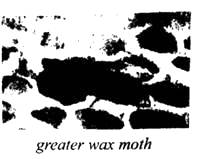Space is becoming more crowded. On December 3, a Falcon 9 rocket made by Space X thundered into the sky. On board were 64 small satellites, more than any American company had launched before in one go. They have a variety of uses, from space-based-radar to the monitoring of radio-frequency-emissions. They will be working in their orbits(轨道).
These objects are part of the latest breed of low-Earth-orbit (LEO) satellites. This launch is just taste of what is planned. Space X and One Web, a communications firm, plan to launch satellites in their thousands, not hundreds. The pair are set to double the total number of satellites in orbit by 2027.
That promises to change things dramatically on Earth. LEO satellites can bring internet connectivity to places where it is still unavailable or unaffordable. This will also be a lasting source of new demand for the space economy. Morgan Stanley, a bank, projects that the space industry will grow from $350 billion in 2016 to more than $
1.1 trillion by
2040. New internet satellites will account for a half this increase.
For that to happen, however, three worries must be overcome. Debris (碎片) is the most familiar concern. As long ago as 1978, Donald Kessler, a scientist at NASA, proposed a situation in which, when enough satellites were packed into low-Earth orbits, any collision could cause a chain reaction which would eventually destroy all space craft in the same orbital plane. The syndrome which bears Mr. Kessler's name weighs heavily on the minds of executives at the new satellite firms. Debris could cause entire tracts (广阔的一片) of space to be unusable for decades.
Solutions exist. One is to grab malfunction satellites and pull them down into Earth's atmosphere. Another is to monitor space more intensively for debris; a US Air Force program me called Space Fence is due to start in
2019. But technology is only part of the answer. Rules are needed to govern the safe disposal of old satellites from low-Earth orbit.
Cyber-security is a second, long-standing worry. Hackers could take control of a satellite and seal intellectual property, redirect data flows or cause a collision. The satellite industry has been slow to respond to such concerns. But as more of the world's population comes to rely on the infrastructure of space for access to the internet, the need for action intensifies.
The third issue follows from the first two. If a simple mistake or a cyber-attack can cause a chain reaction which wipes out hundreds of billions of dollars of investment, who is liable? Underwriters (承保商) are studying the plans of firms (quite a lot) that wish to operate large numbers of satellites. But there is a long way to go before the risks are well understood, let alone priced.
As space becomes more commercialized, mind-bending prospects open up: packages moved across the planet in minutes by rocket rather than by plane, equipment sent to other small planets, passengers launched into orbit and beyond. All that and more may come, one day. But such activities would raise the same questions as LEO satellites do. They must be answered before the space economy can truly develop.
